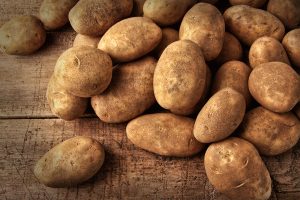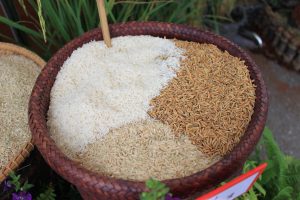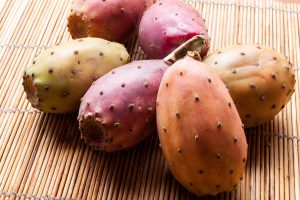By Heide Kennedy, Arizona Farm Bureau Communications Intern
Welcome back to another quick and easy weeknight dinner recipe! This one is for another one of our favorites that we still make to this day, and they’re barbecue-loaded baked potatoes. This one is just like it sounds. A baked potato loaded up with smoky barbecue flavored meat, smothered in barbecue sauce, with a little cheese on top.

Be sure to try one of these delicious ways to use potatoes to fill your family’s plate (photo credit: BigStockPhoto.com)
A little disclaimer, this recipe does take a little longer due to having to bake the potatoes, but if you have an automatic-off oven, you cut back on the time by popping them in the oven while you go do something else, letting them bake, and forgetting about them until you’re ready to fill them!
Ingredients:
- 6 potatoes scrubbed clean
- 1 lb of ground pork or ground beef
- ½ a chopped yellow onion
- 1 clove of garlic pressed
- Canola oil for rubbing potatoes
- Butter for inside the potatoes
- Salt and Pepper
- Garlic powder
- Shredded cheese of choice
- Barbecue sauce of choice
Directions:
Preheat the oven to 375 degrees. Rub the clean potatoes in some canola oil, poke the tops a couple of times with a fork, sprinkle with salt, and place them on a baking sheet. Toss them into the oven for about 45 minutes to an hour.
Brown the ground beef or pork in a skillet and drain off the grease. Add the garlic and onion, and season it with some salt and pepper.
Once the potatoes are done, cut them in half and squeeze the ends to open them. Add a little butter to the insides and fill each potato with some of the ground meat. Sprinkle the tops with the desired cheese and then put under a low broiler to melt the cheese. Once the cheese is melted, drizzle the tops with the barbecue sauce of your choice.
The best part about this meal is that the meat is seasoned very simply, so it allows each person to choose their cheese and sauce if desired. Because if your family is anything like mine, everyone has their own favorite combination. It’s also nice because it’s a hearty meal that is pretty easy to whip up.
One way you might make it even better is to use fresh ground meat and dairy products produced by Arizona farmers! Look for Arizona-produced products when you go out ingredient shopping!
For more recipes and health-related articles, check out the Fill Your Plate blog!





